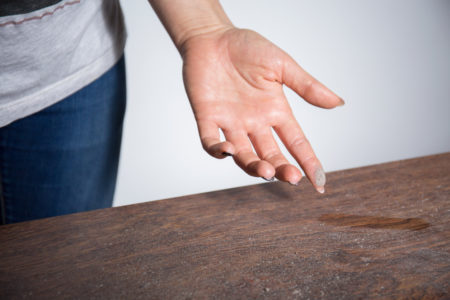
Share On Social!
Dust buildup in the home can lead to allergy issues and asthma attacks — now researchers are saying it can also lead to weight gain in children.
A new study links over 100 chemicals found in dust to fat cell generation and development, or endocrine disrupters.
This kind of linkage is uncharted territory, said Christopher Kassotis, research team lead and post-doctoral research associate at Duke University’s Nicholas School of the Environment, in a news release.
“This is some of the first research investigating links between exposure to chemical mixtures present in the indoor environment and metabolic health of children living in those homes,” Kassotis said.
Latinos, who face chemical exposure at work and in the air they breathe, can also be subject to these adverse substances in the home.
Tests and Results
Researchers secured 194 samples from households in North Carolina (9.5% Latino). From there they examined these chemicals under petri dish, analyzing their ability to promote fat cell development.
Roughly 110 chemicals in dust presented signs of encouraging some form of weight gain — 70 triggering dust-caused fat cell development and 40 precursor fat cell development.
“Exposure to numerous environmental contaminants have, over decades, been demonstrated to result in increased metabolic dysfunction and/or weight gain in cell and animal models, and in some cases, even in humans,” the study states.
Worse, the study also illustrates that even small concentrations of these chemicals can lead to fat development. However, Kassotis said the mixture of both kinds of dust-chemicals could play a large part in weight gain.
Exposure and Risks
Children can ingest up to 100 milligrams of dust every day, according to the EPA, and are especially at risk.
“We found that two-thirds of dust extracts were able to promote fat cell development and half promote precursor fat cell proliferation at 100 micrograms, or approximately 1,000 times lower levels than what children consume on a daily basis,” Kassotis said.
Homes with exceedingly high dust-chemical levels also had overweight or obese children living there. This research, however, focuses on the dust’s effects on kids, not adults.
While the study focused on chemicals found in dust, the same substances are also found in products such as laundry detergents and household cleaners according to Technology Networks.
Preventions and Protections
Those worried about potential exposure can take steps to lessen the amount of dust and exposure in their home.
“So, one of the things that we often tell people is that dusting frequently is a good way to reduce exposure,” Kassotis told Living on Earth. “With that said, we suspect that dry dusting may just actually kick these chemicals back up in the air and make it easier to inhale them. So, it really should be a wet dusting to avoid increasing your exposure to these chemicals.”
Other steps that can decrease dust, according to MindBodyGreen, include:
- Buying nontoxic home products
- Removing shoes when entering the house
- Cleaning with a high-efficiency particulate air vacuum
Kassotis and his team are continuing their endocrine disrupters research by studying potential links in household products to metabolic issues.
Unfortunately, dust isn’t the only source of chemical exposure impacting Latinos.
Chemicals found in paint strippers and cosmetics are also under the microscope for their potential adverse side effects.
Editor’s Note: This article is part of a collaboration between Salud America! and the Hoffman Toxicant-Induced Loss of Tolerance (TILT) program at UT Health- San Antonio. To find out if you are TILTed due to exposure to everyday foods, chemicals, or drugs, take a self-assessment or learn more about TILT.
Explore More:
Chemical & Toxic ExposureBy The Numbers
1
Quick Survey
Can help you find out how chemically sensitive you are



